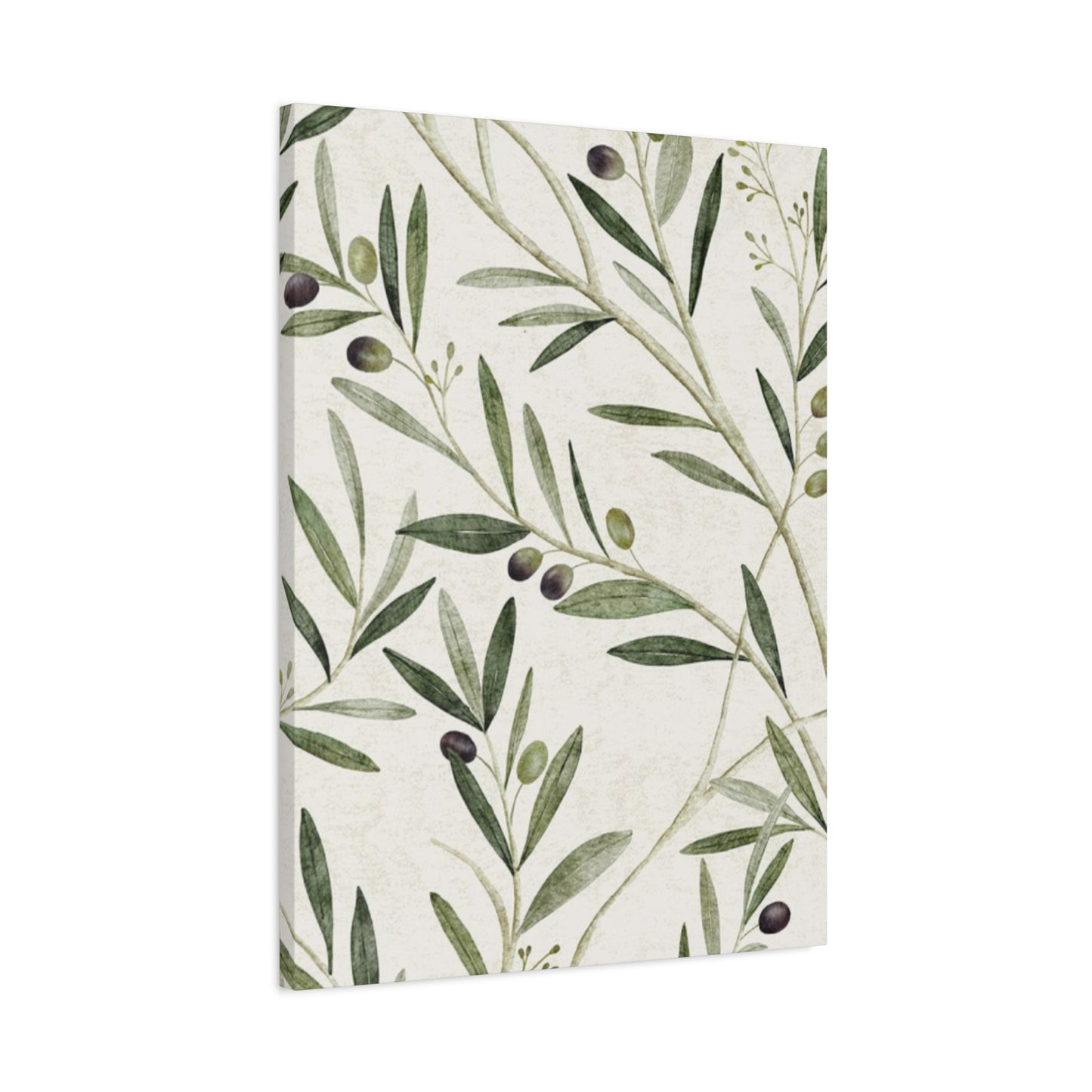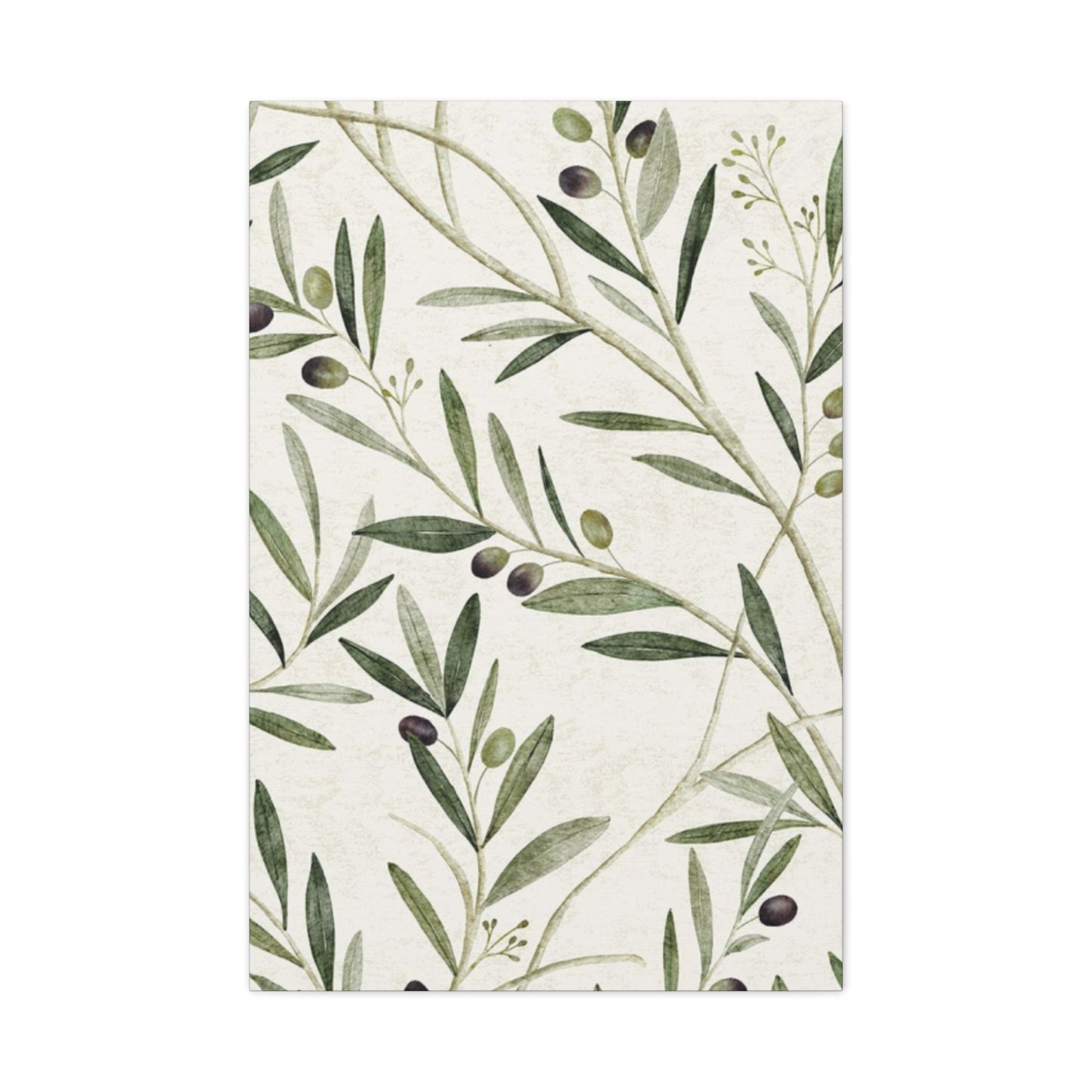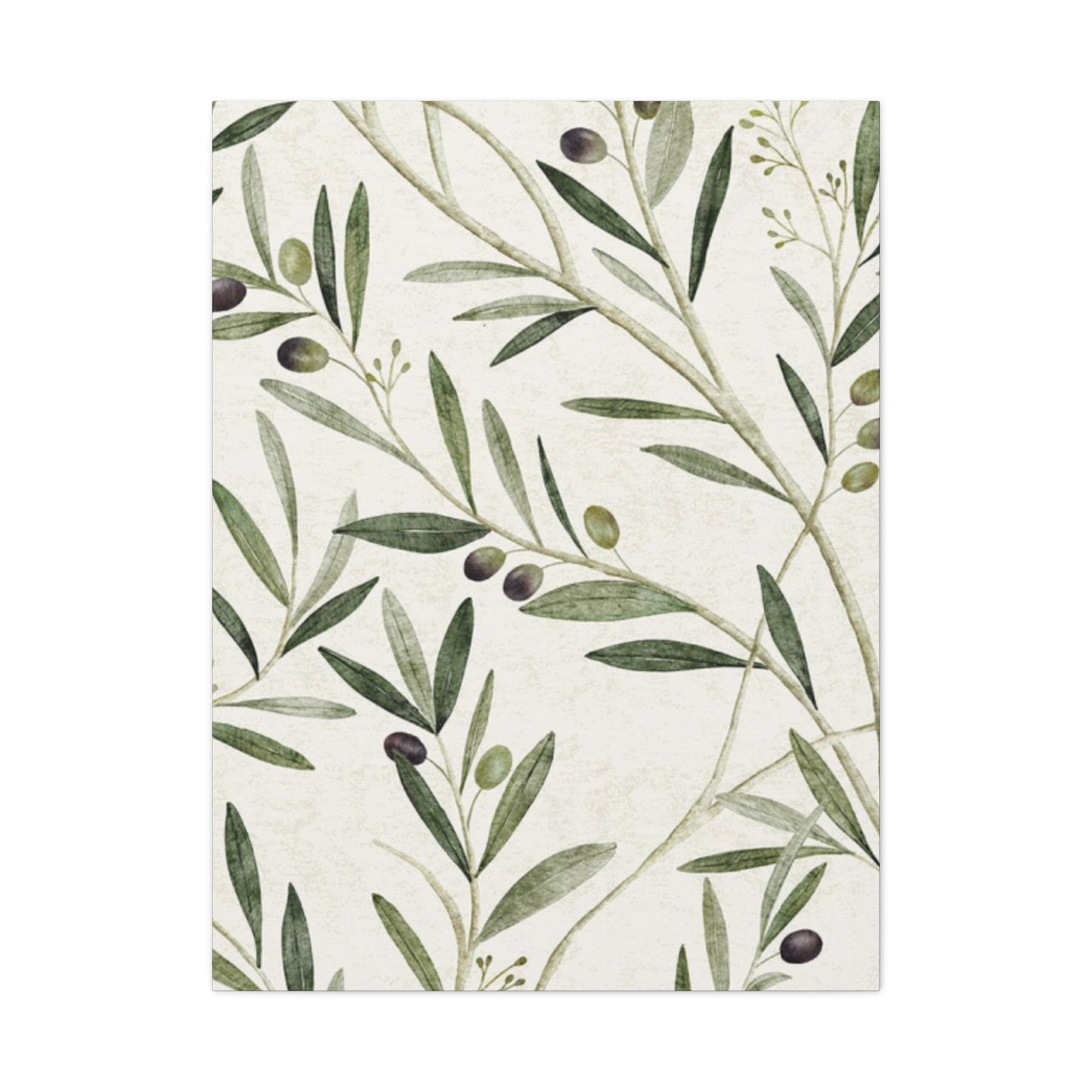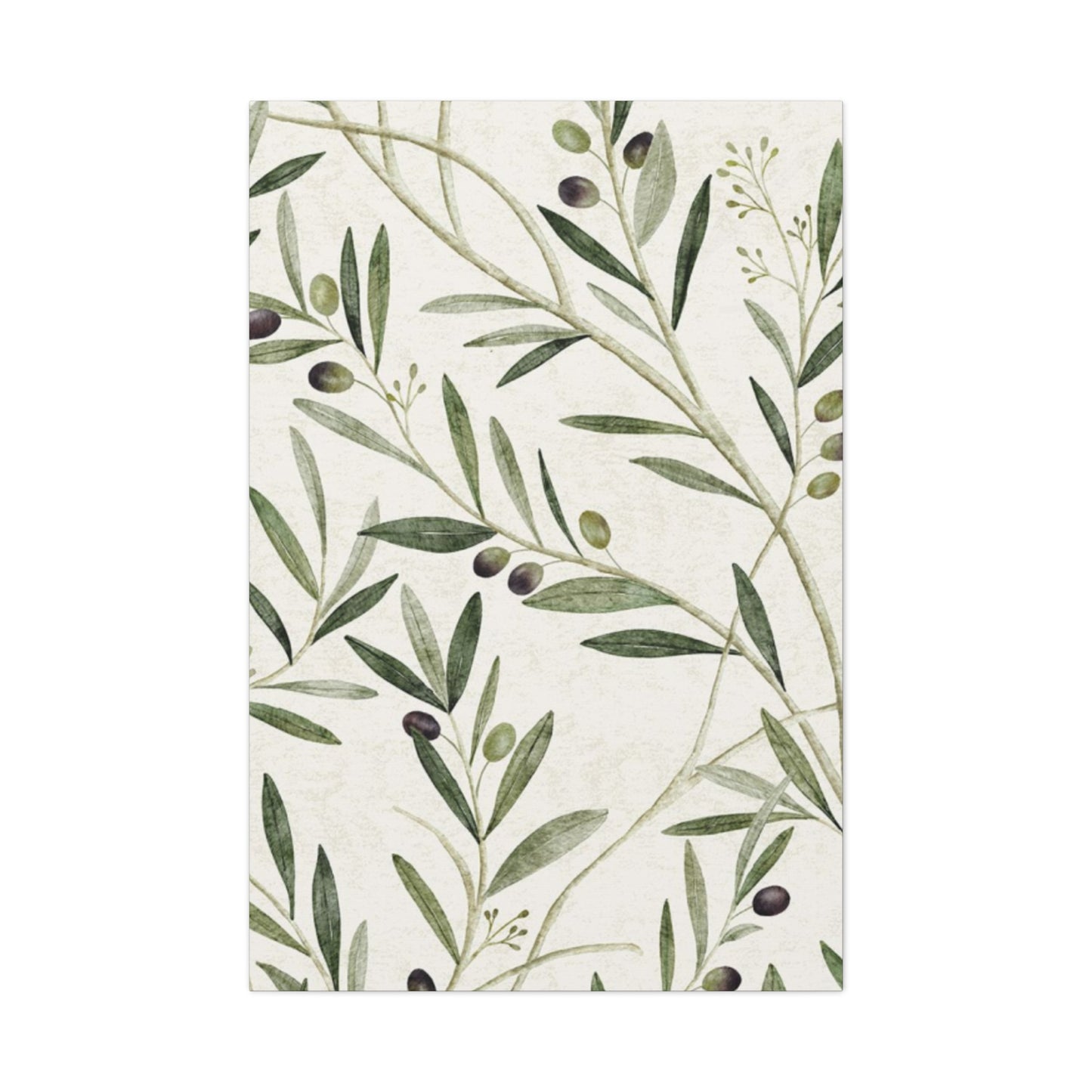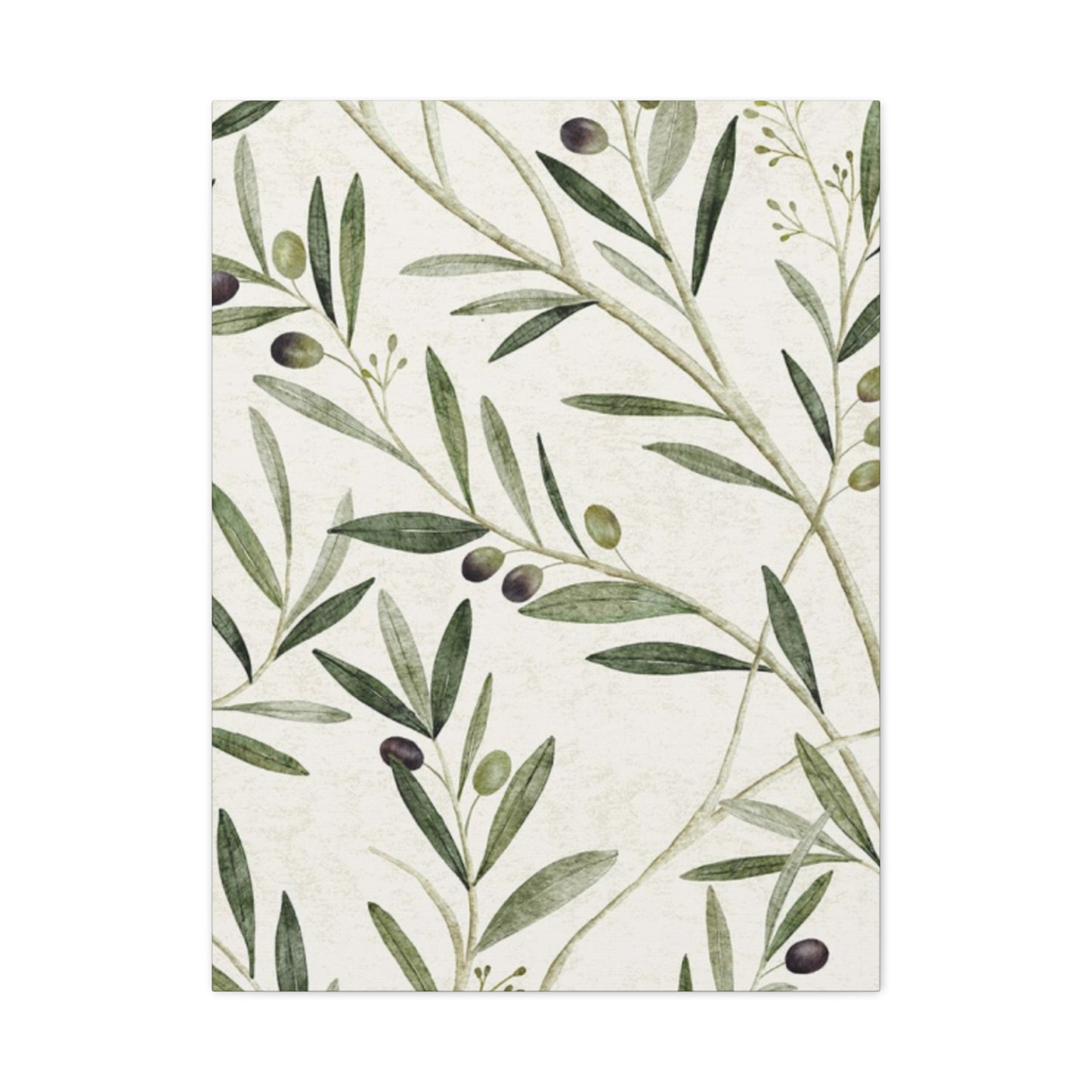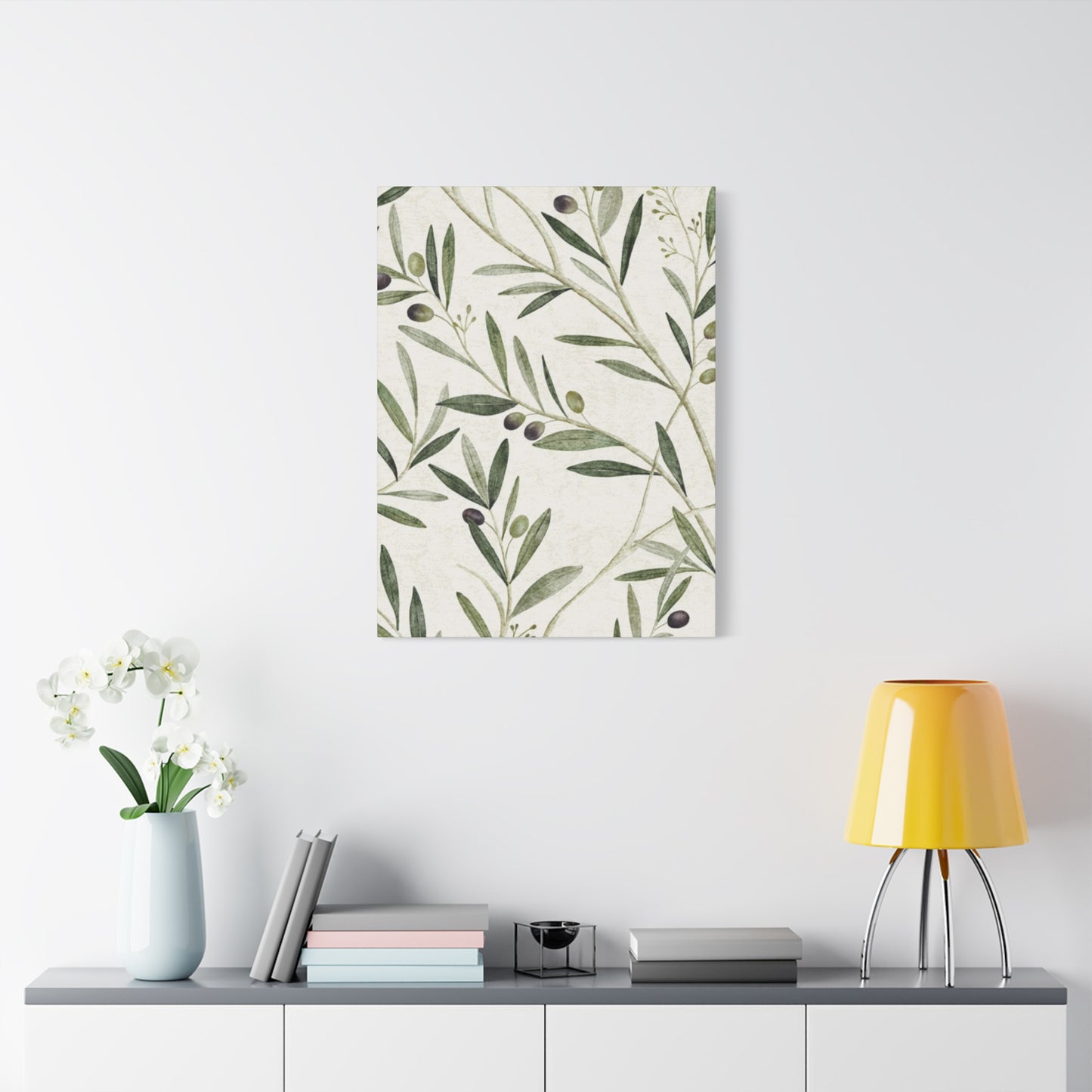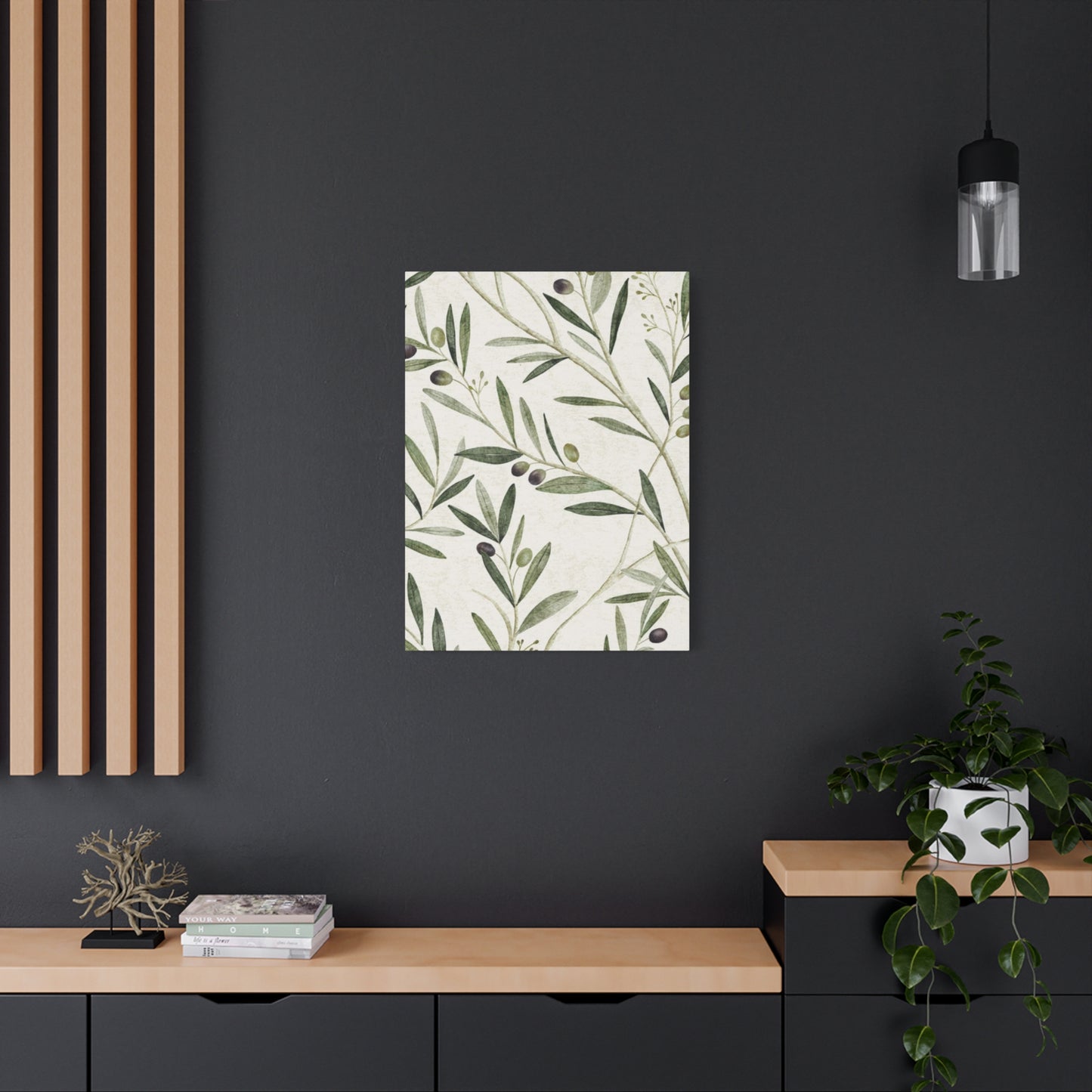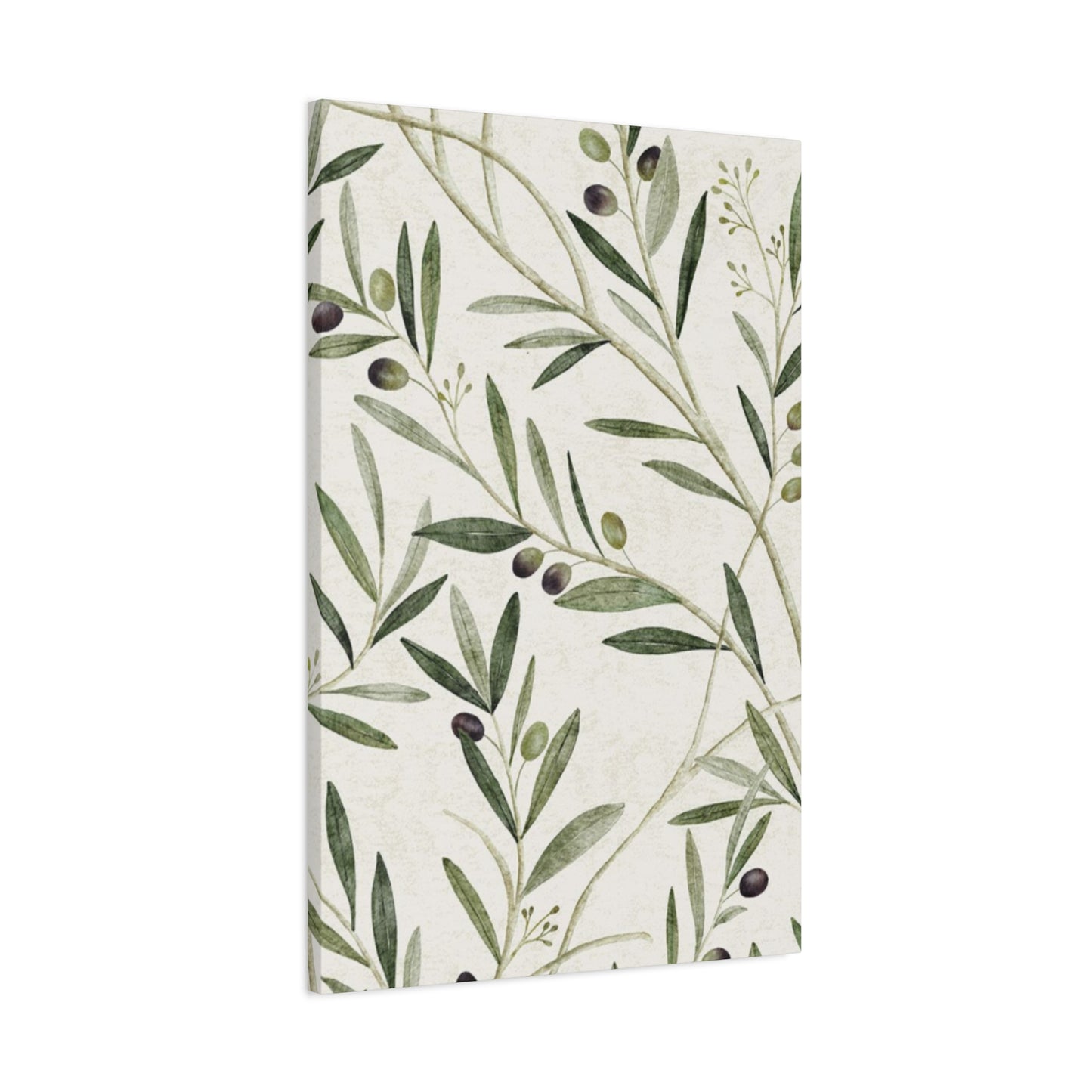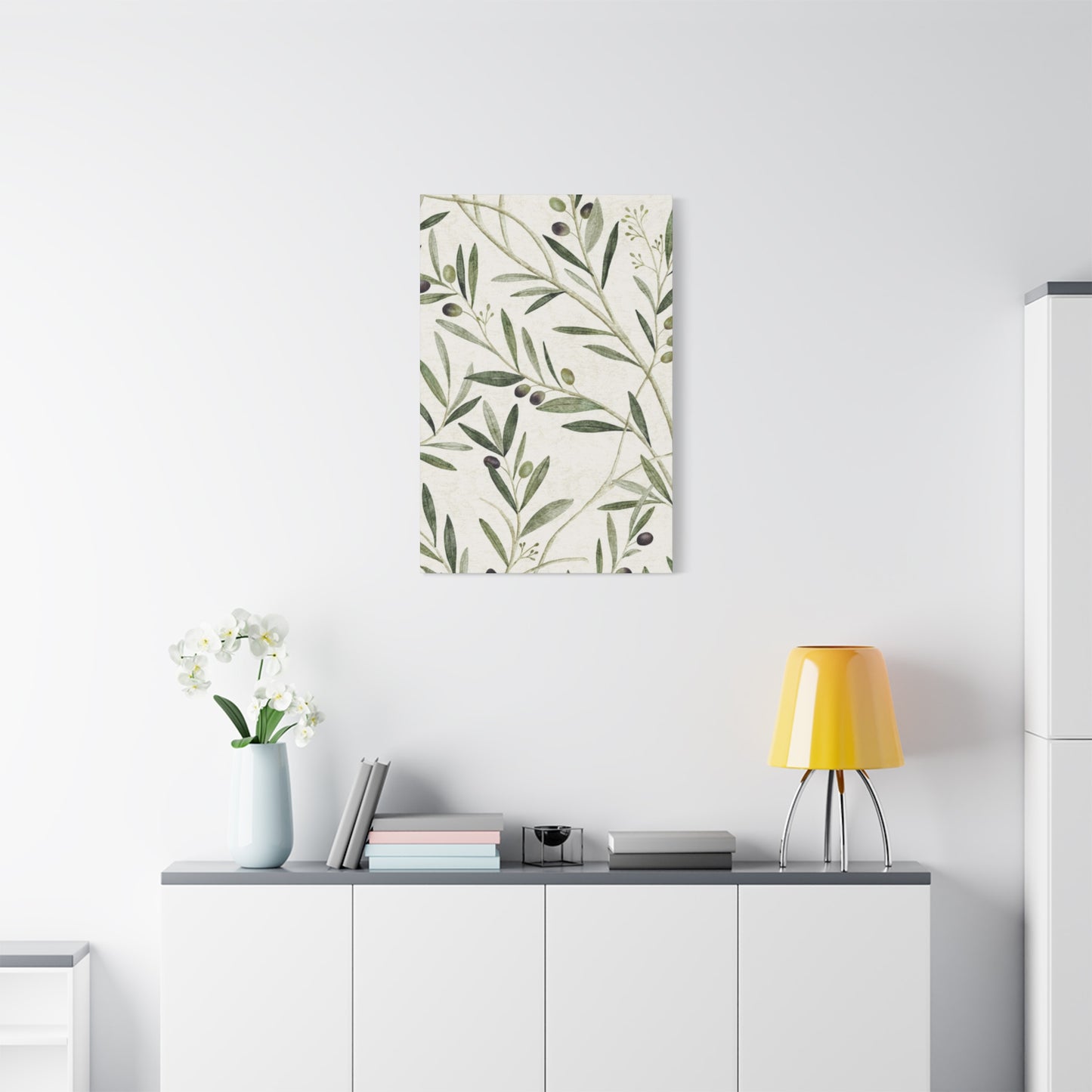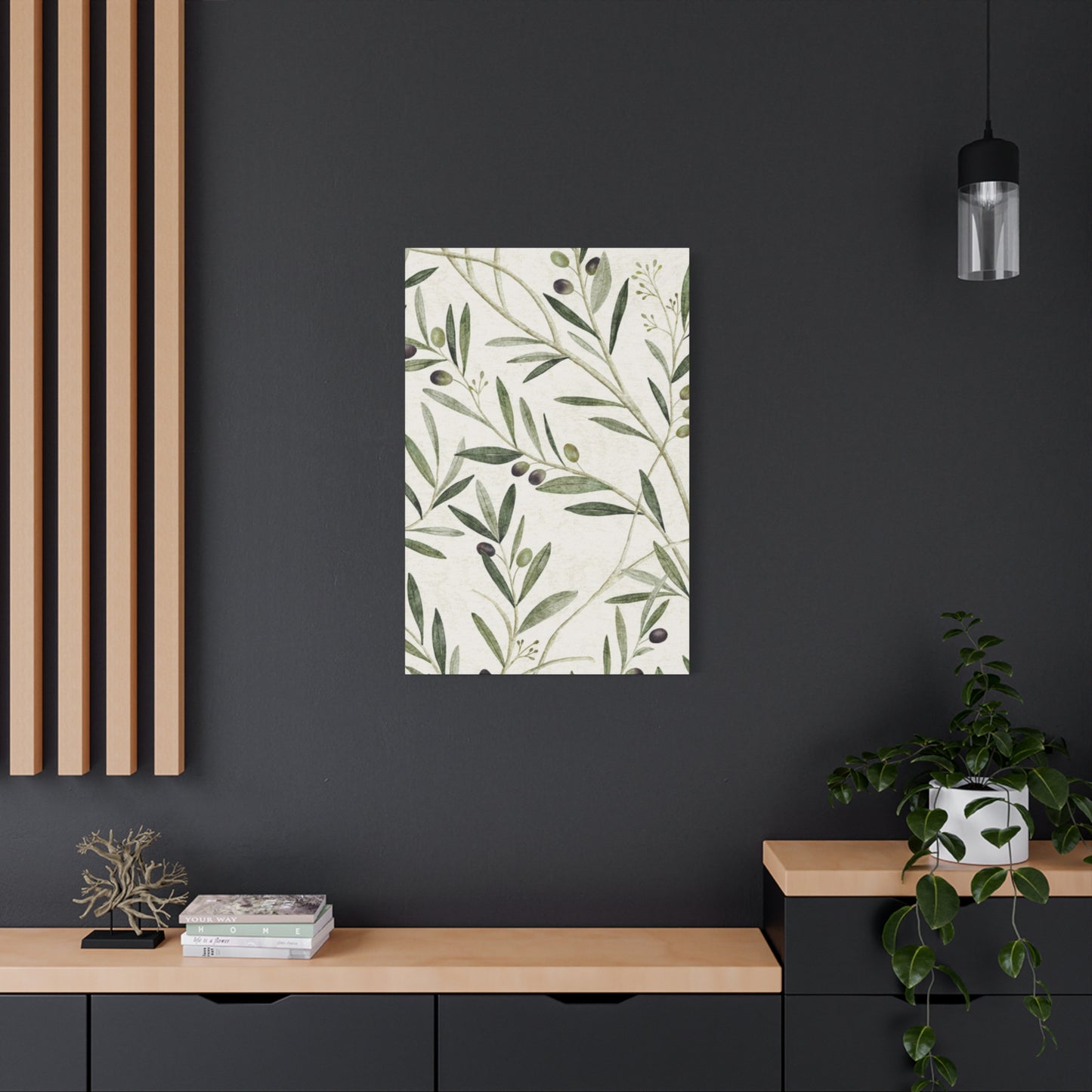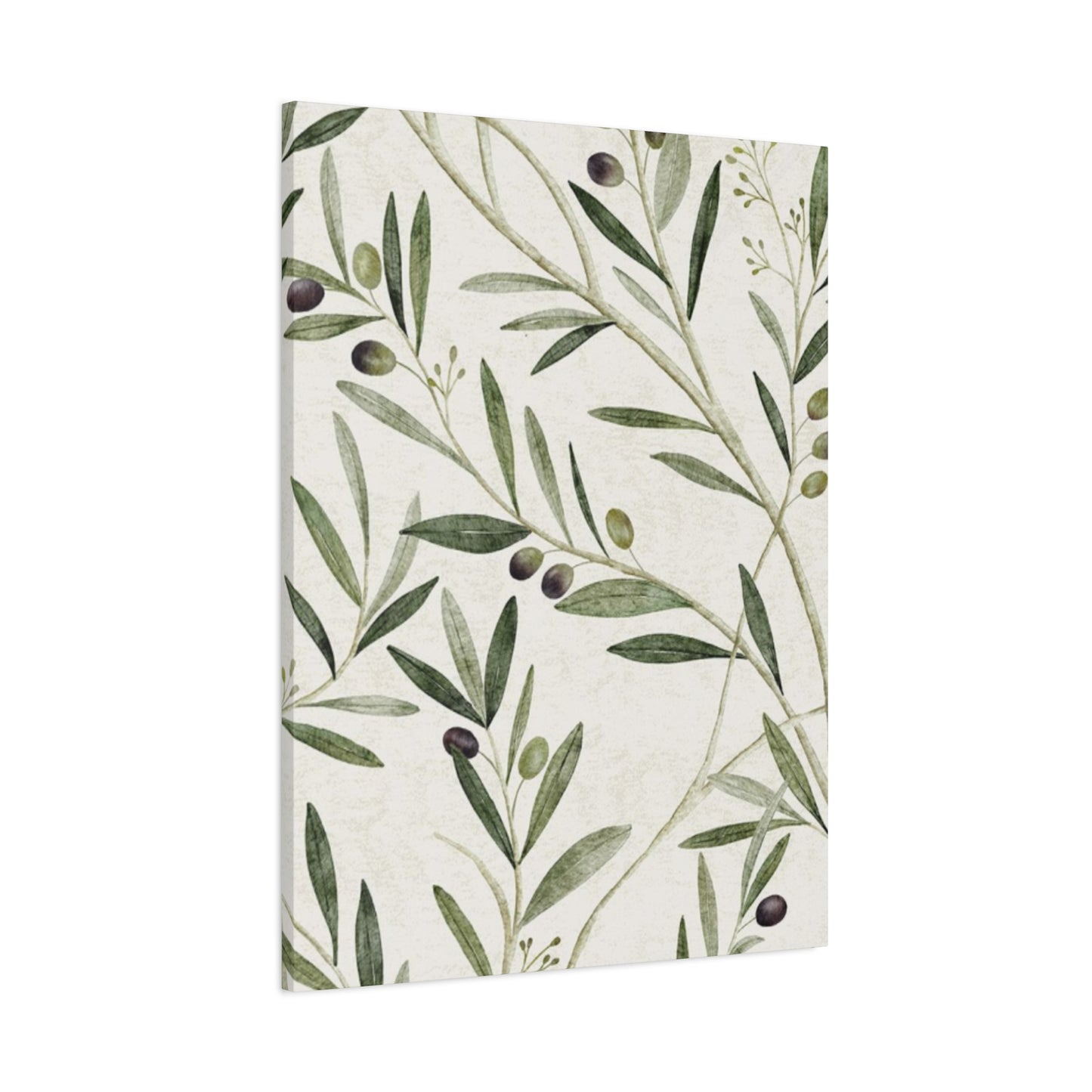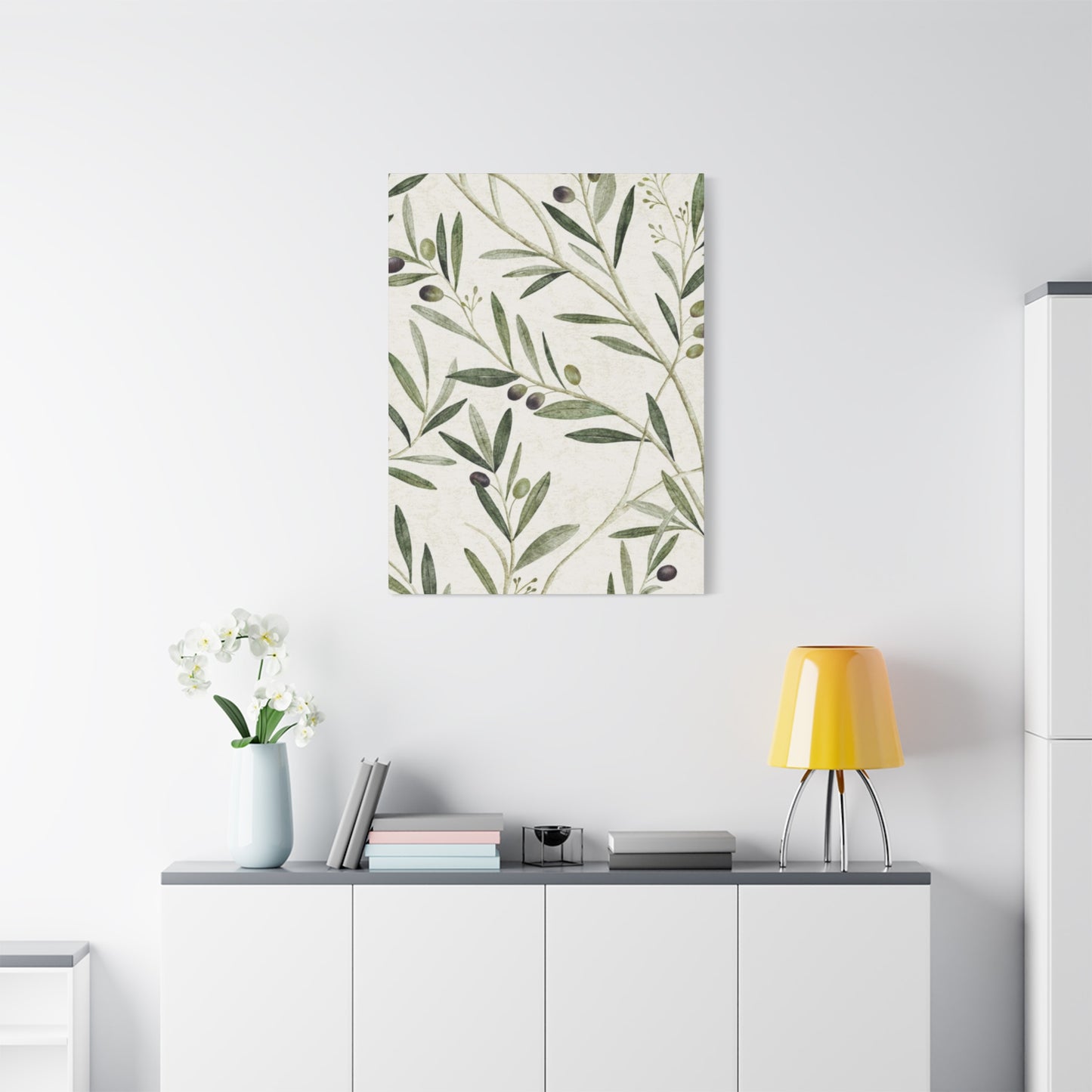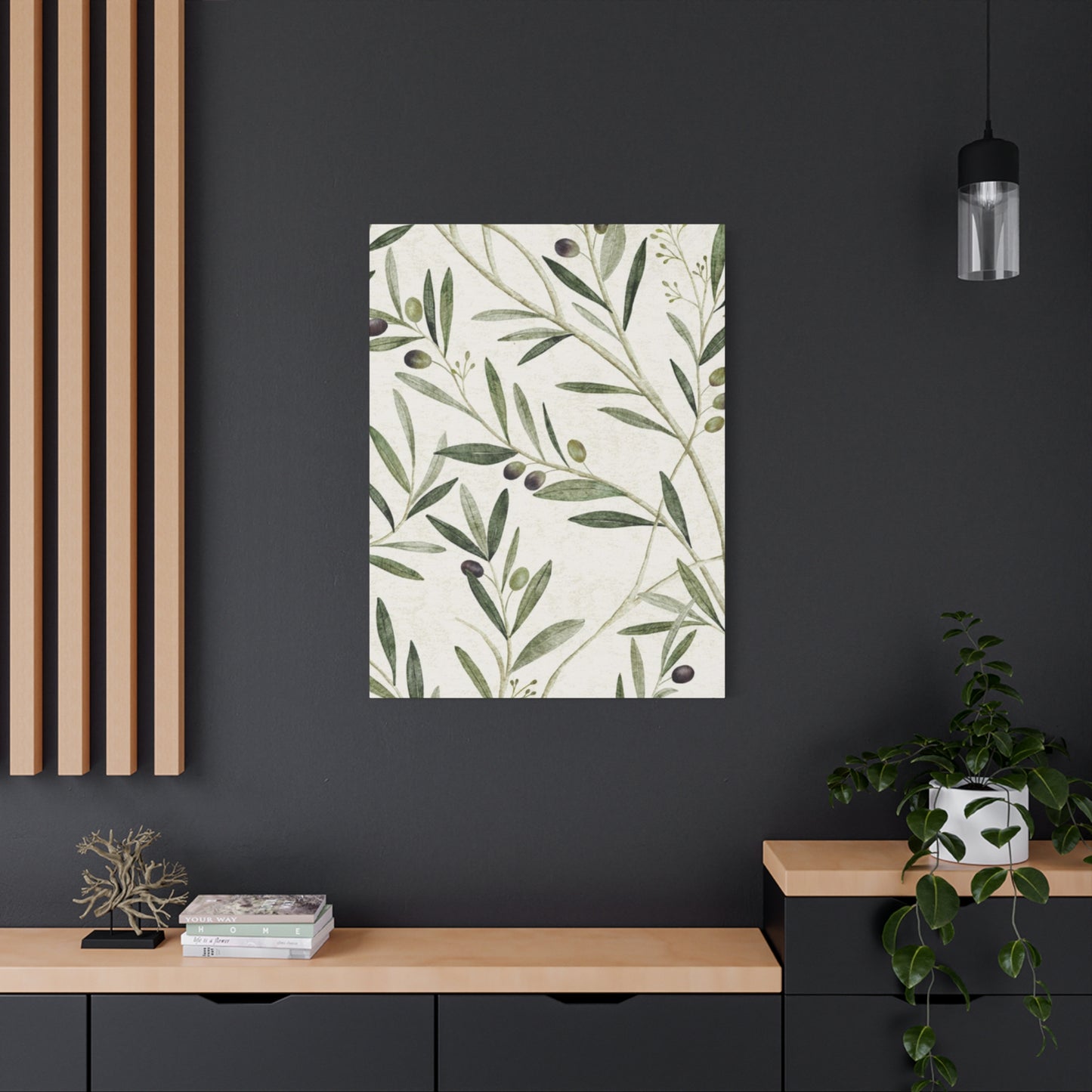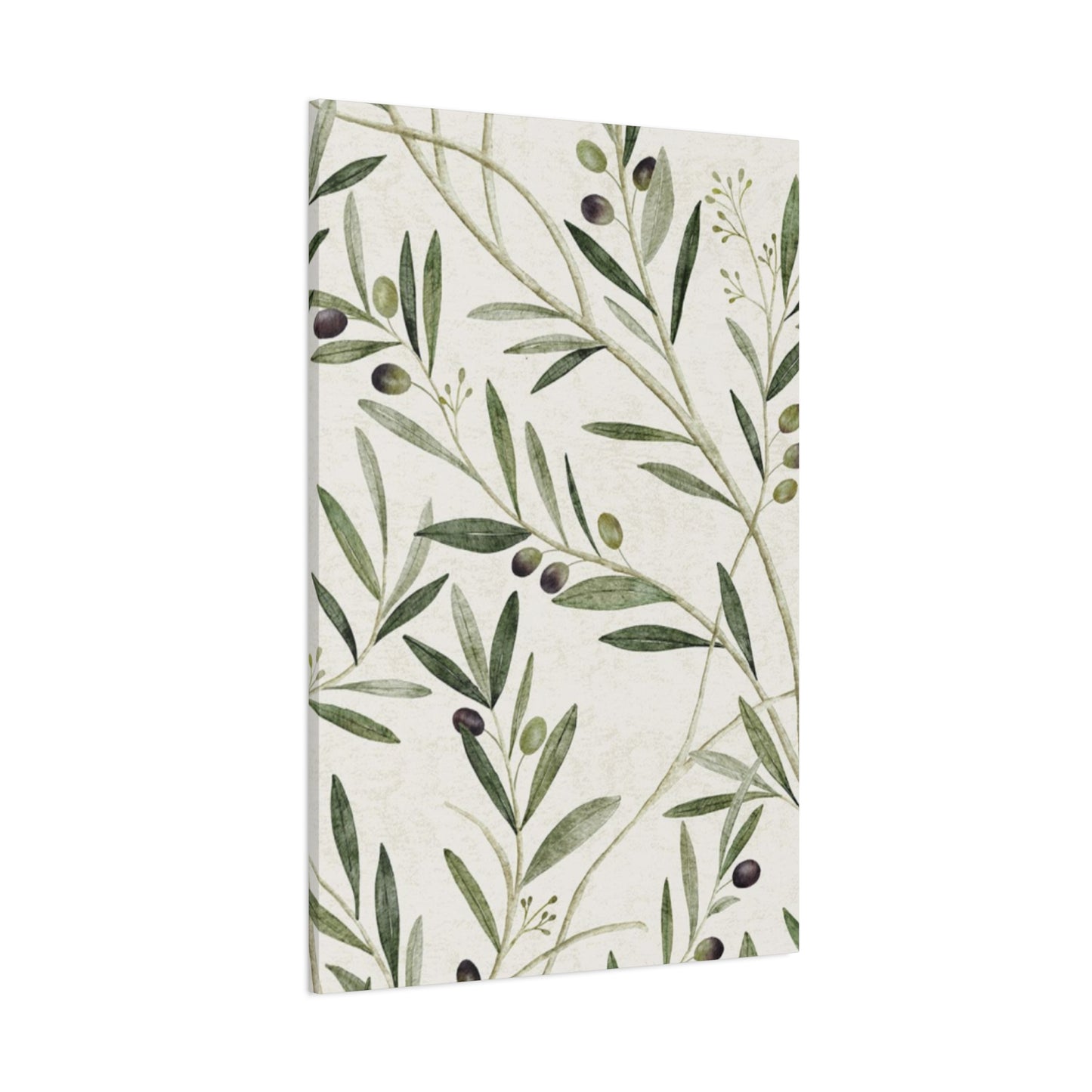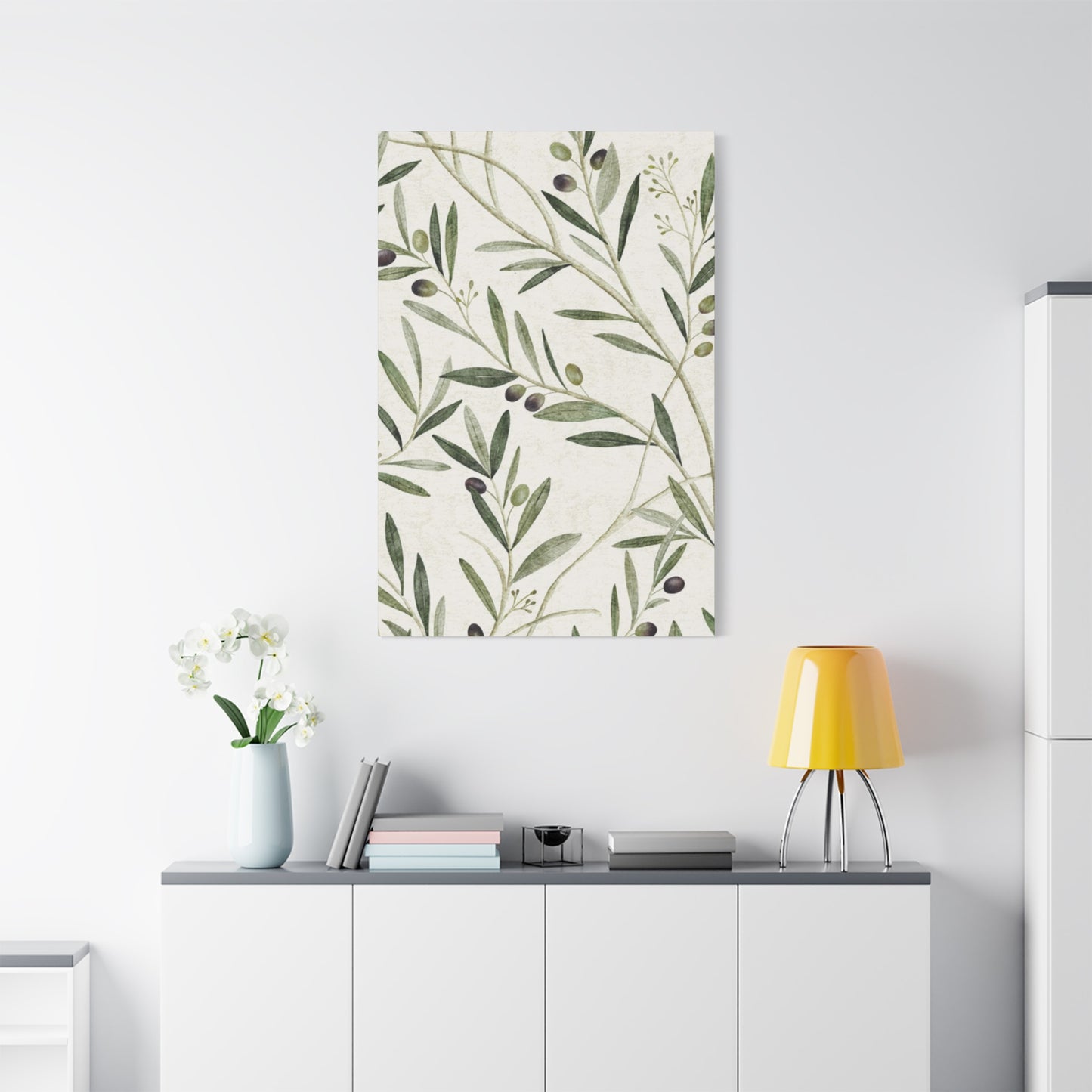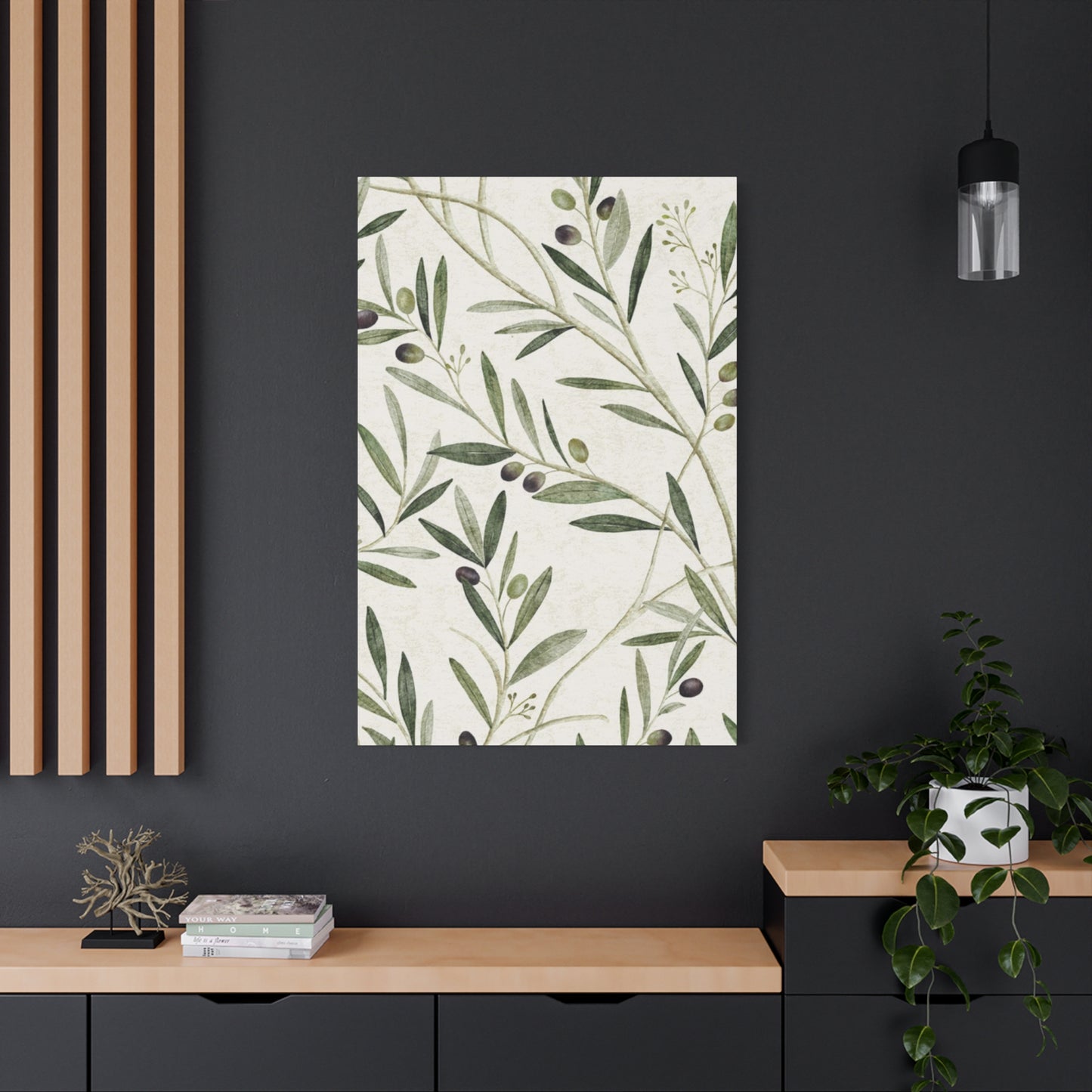A Touch of Green: Olive Plant Leaves Wall Art for a Fresh and Inviting Atmosphere
The integration of nature-inspired artwork into residential and commercial spaces has experienced remarkable growth in contemporary interior design. Among the most sought-after aesthetic choices, olive-toned Olive green illustrations and photographic representations of plant foliage have emerged as sophisticated solutions for creating serene, visually compelling environments. These artistic pieces featuring verdant leaves against neutral backgrounds offer versatility that transcends conventional decorating boundaries, appealing to minimalists, maximalists, and everyone in between.
The psychological impact of bringing natural elements indoors cannot be overstated. Research in environmental psychology consistently demonstrates that visual connections to nature reduce stress levels, improve cognitive function, and enhance overall wellbeing. When physical plant care proves challenging due to lifestyle constraints, lighting limitations, or maintenance concerns, Olive green artwork provides an accessible alternative that delivers similar visual benefits without the responsibility of cultivation.
The Rising Popularity of Nature-Inspired Interior Decoration
Contemporary society faces an unprecedented disconnect from natural environments. Urban populations spend approximately ninety percent of their time indoors, creating what researchers term "nature deficit disorder." This separation from the natural world has profound implications for mental health, productivity, and general life satisfaction. Interior designers and wellness advocates increasingly recognize that incorporating natural imagery into built environments serves as a critical counterbalance to modern living conditions.
Olive green artwork specifically addresses this need by bringing organic forms, natural color palettes, and living textures into spaces where actual plants might struggle to thrive. The subtle variations in tone, the intricate vein patterns visible in enlarged leaf structures, and the gentle organic shapes all contribute to creating environments that feel more balanced and harmonious. Unlike trendy decorative choices that quickly become dated, nature-inspired artwork possesses timeless appeal rooted in humanity's deep evolutionary connection to the natural world.
The current design zeitgeist favors authenticity, sustainability, and mindful living. Olive green prints align perfectly with these values, offering visual interest that feels genuine rather than manufactured. The olive-green color spectrum particularly resonates with contemporary preferences for muted, sophisticated palettes that create calm rather than visual noise. These earthy tones complement diverse design schemes while maintaining enough personality to serve as focal points or conversation starters.
Understanding Color Psychology in Olive green Art Selection
Color influences human psychology and behavior in powerful, often subconscious ways. The selection of olive-green tones for Olive green artwork taps into deep-seated associations with growth, renewal, stability, and natural harmony. Unlike brighter, more saturated greens that can feel energizing or even overwhelming, olive-green exists in a sophisticated middle ground that provides visual interest without demanding excessive attention.
Olive hues contain complex undertones that shift depending on lighting conditions and surrounding colors. In morning light, they may appear fresher and more vibrant, while evening illumination brings out deeper, more contemplative qualities. This dynamic nature ensures that artwork never feels static or monotonous, instead offering subtle variations that keep spaces feeling alive and responsive to natural rhythms.
The neutrality of olive-green makes it remarkably versatile in color coordination. It pairs beautifully with warm wood tones, creating cohesive natural palettes that feel grounded and organic. It complements cool grays and whites, adding necessary warmth and preventing spaces from feeling sterile or clinical. It even works alongside bolder accent colors, providing visual balance that allows brighter hues to shine without overwhelming the overall composition.
From a neurological perspective, green wavelengths require minimal adjustment from the human eye, making them among the most restful colors to view for extended periods. This physiological ease translates to psychological comfort, making olive-green Olive green artwork particularly appropriate for spaces intended for relaxation, concentration, or restoration. Bedrooms, home offices, reading nooks, and meditation spaces all benefit from this calming visual presence.
Photography Versus Illustrated Plant Art
The choice between photographic and illustrated Olive green artwork involves aesthetic, practical, and philosophical considerations. Photographic representations offer realism and detail that can be breathtaking in their precision. Modern macro photography reveals textures, subtle color gradations, and structural details invisible to casual observation. These images create windows into the natural world, offering intimate perspectives that foster appreciation for Olive green complexity.
High-quality Olive green photography captures not just the subject but also qualities of light, atmosphere, and moment. The interplay of shadows, the translucency of backlit leaves, the delicate droplets of morning dew—these elements add depth and dimension that transform simple plant documentation into compelling artistic statements. Photographic prints work particularly well in contemporary spaces where clean lines and modern sensibilities predominate.
Illustrated Olive green art, conversely, offers interpretive possibilities unavailable to photography. Whether executed in watercolor, pen and ink, digital media, or mixed techniques, illustrations reflect the artist's hand and perspective. This human element adds warmth and character that some viewers find more emotionally resonant than photographic precision. Vintage Olive green illustrations particularly appeal to those drawn to historical aesthetics, biophilia, and the intersection of art and science.
The illustration tradition extends back centuries to when botanists employed artists to document plant species before photography existed. These historical precedents lend illustrated Olive green art an air of scholarly sophistication and timeless elegance. Contemporary artists continue this tradition while incorporating modern sensibilities, creating works that honor heritage while feeling fresh and relevant to current design contexts.
Combining photographic and illustrated pieces within the same space creates visual interest through contrast while maintaining thematic cohesion. A gallery wall might feature primarily photographic prints with one or two illustrations as accent pieces, or vice versa. This mixing of media adds depth and personality while preventing the monotony that can result from too much similarity in presentation style.
Olive green Art in Commercial and Hospitality Settings
Businesses increasingly recognize that thoughtful interior design influences customer experience, employee satisfaction, and brand perception. Olive green artwork serves multiple strategic functions in commercial contexts.
Healthcare facilities utilize nature imagery to reduce patient anxiety and promote healing. Studies demonstrate that views of natural elements, even through artwork, correlate with improved recovery times, reduced pain medication requirements, and higher patient satisfaction scores. Olive green prints in examination rooms, waiting areas, and patient rooms create calming environments that mitigate the stress inherent in medical settings. The non-threatening, universally accessible nature of plant imagery suits diverse patient populations.
Corporate offices employ Olive green artwork to humanize potentially sterile business environments. Conference rooms benefit from calming natural imagery that reduces tension during difficult meetings. Open office areas gain visual interest that breaks up monotonous workstation seas. Executive offices project sophistication and environmental consciousness through curated Olive green collections. The biophilic design movement recognizes that nature connections boost productivity, creativity, and job satisfaction—artwork provides these benefits where space constraints prevent living plants.
Hospitality venues use Olive green art to establish ambiance and reinforce brand identity. Boutique hotels might feature local Olive green subjects that connect guests with regional character. Spas and wellness centers employ Olive green imagery supporting relaxation and rejuvenation themes. Restaurants integrate plant-themed artwork that reinforces farm-to-table or natural food philosophies. These strategic choices create cohesive experiences that differentiate properties in competitive markets.
Retail environments leverage Olive green artwork to enhance shopping experiences and communicate brand values. Natural, organic, or eco-conscious brands find particular alignment with Olive green aesthetics. Fitting rooms benefit from flattering natural imagery that puts customers at ease. Window displays incorporating Olive green art attract attention while establishing seasonal or thematic contexts. The investment in quality artwork signals attention to detail that influences perceptions of product quality.
Educational institutions employ Olive green artwork that serves both decorative and instructional purposes. Science classrooms display anatomically accurate Olive green illustrations that support curriculum. Libraries feature calming natural imagery conducive to study and concentration. Common areas gain visual interest that creates welcoming, intellectually stimulating environments. Schools increasingly recognize that physical environments significantly impact learning outcomes and student wellbeing.
Digital Versus Physical Olive green Art
Technology introduces new possibilities for experiencing and displaying Olive green artwork. Understanding the strengths and limitations of digital approaches helps determine when they suit particular applications.
Digital frames display rotating collections of Olive green images, providing variety impossible with physical artwork. Thousands of images stored in device memory create ever-changing presentations that prevent visual fatigue. Seasonal programming automatically adjusts displayed imagery to match current conditions. Family photographs can be interspersed with Olive green art, creating personalized rotation schemes. Digital displays suit contemporary spaces where technology integration feels natural and appropriate.
Quality considerations significantly impact digital artwork's effectiveness. Display resolution determines image clarity—4K resolution provides detail approaching traditional prints, while lower resolutions appear pixelated or soft. Screen brightness affects ambiance—overly bright displays feel harsh and artificial, while dim screens fail to command attention. Color accuracy varies considerably between devices—premium displays reproduce colors faithfully, while budget options distort hues significantly.
Energy consumption and environmental impact merit consideration. Continuously powered digital displays consume electricity indefinitely, accumulating significant energy usage over years. This ongoing consumption contrasts with physical artwork's one-time production impact. For environmentally conscious individuals, this factor might outweigh digital displays' convenience and variety benefits.
Physical artwork provides tactile presence and material authenticity that digital displays cannot replicate. The texture of paper, the dimensional quality of framing, the slight imperfections of printing—these tangible elements contribute to artwork's emotional resonance. Physical pieces feel permanent and intentional in ways that digital imagery, despite its convenience, often does not.
Hybrid approaches combine both formats' advantages. Primary spaces might feature curated physical artwork selected for particular significance or quality, while secondary areas employ digital displays providing variety and visual interest. This balanced strategy acknowledges each medium's strengths while mitigating individual weaknesses.
Psychological and Wellness Benefits of Olive green Imagery
The human attraction to natural forms and imagery reflects deep evolutionary roots. Understanding these connections explains why Olive green artwork profoundly influences mood, stress levels, and overall wellbeing.
Biophilia theory proposes that humans possess an innate tendency to seek connections with nature and other forms of life. This drive stems from evolutionary history—for millennia, human survival depended on detailed understanding of plants for food, medicine, shelter, and environmental cues. Though modern life no longer requires this knowledge for survival, the psychological need for nature contact persists. Olive green artwork satisfies this need, providing symbolic nature connection when physical access proves limited.
Stress reduction constitutes one of Olive green imagery's most documented benefits. Viewing natural scenes lowers cortisol levels, reduces blood pressure, and decreases heart rate. These physiological changes indicate genuine relaxation rather than mere subjective comfort. In high-stress environments like workplaces or urban apartments, Olive green artwork provides accessible stress mitigation that requires no special effort or time investment.
Attention restoration theory explains how nature imagery combats mental fatigue. Directed attention required for concentrated work or navigation of complex environments depletes cognitive resources, leading to reduced performance and increased errors. Natural scenes engage involuntary attention that doesn't exhaust mental capacity, allowing directed attention resources to recover. Brief viewing of Olive green artwork during work breaks facilitates this restoration process, improving subsequent task performance.
Creativity and problem-solving benefit from exposure to natural imagery. Research indicates that viewing natural scenes before creative tasks improves performance on measures of divergent thinking and innovative problem-solving. The mechanisms remain unclear, but hypotheses suggest nature exposure reduces mental constraints and anxiety that inhibit creative thinking. Incorporating Olive green artwork in workspaces where innovation matters provides simple environmental support for creative processes.
Emotional regulation improves with regular nature exposure, even through imagery. Natural scenes generally evoke positive emotions while diminishing negative ones. This effect proves particularly valuable for individuals experiencing depression, anxiety, or chronic stress. While Olive green artwork cannot substitute for professional mental health treatment, it can provide supportive environmental influence that complements therapeutic interventions.
Olive green Art Across Different Design Styles
Olive green artwork adapts remarkably well across diverse aesthetic approaches. Understanding how to select and present pieces for specific styles ensures cohesive integration rather than jarring disconnect.
Minimalist design prioritizes simplicity, clarity, and intentionality. Olive green artwork suits minimalism through its organic simplicity and universal appeal. Single large-scale prints create impact without clutter. Simple framing in black, white, or natural wood maintains clean aesthetics. Subject matter should demonstrate restraint—single leaves or simple compositions rather than complex arrangements. The artwork functions as a controlled accent within overall visual quietness.
Scandinavian design emphasizes natural materials, light color palettes, and connection to nature. Olive green prints feel inherently aligned with these principles. Light wood frames complement typical Scandinavian furniture materials. White or light-colored mats enhance the bright, airy quality characteristic of this style. Photography showcasing natural light and organic forms works particularly well. The overall effect should feel effortless and unpretentious rather than formally arranged.
Industrial aesthetics juxtapose raw materials, exposed structures, and urban grittiness with softening elements. Olive green artwork provides necessary organic contrast to hard surfaces and mechanical forms. Metal frames, particularly in black or raw steel finishes, maintain industrial character while presenting natural content. Oversized prints make bold statements that hold their own against industrial spaces' visual weight. The contrast between delicate Olive green forms and rugged surroundings creates dynamic tension that energizes spaces.
Bohemian style embraces eclecticism, pattern layering, and global influences. Olive green artwork contributes to the collected-over-time aesthetic central to this approach. Mixing frame styles, sizes, and colors creates appropriately casual presentations. Vintage Olive green illustrations particularly suit bohemian sensibilities. Combining Olive green prints with other artwork types, textiles, and decorative objects achieves the layered richness characteristic of this style.
Traditional design honors classical proportions, symmetry, and established aesthetics. Vintage Olive green illustrations with scientific or historical character suit traditional spaces perfectly. Symmetrical arrangements and matched framing create formal presentations. Rich wood frames in classic finishes complement traditional furniture pieces. Matting in cream or subtle tones maintains refined elegance. The overall presentation should feel curated and intentional rather than casual.
Contemporary design emphasizes current trends, clean lines, and sophisticated simplicity. High-quality Olive green photography with strong compositional qualities suits contemporary aesthetics. Floating frames or gallery-style presentation creates modern sophistication. Bold scales and dramatic cropping make confident statements. Coordination with current color trends and materials ensures the artwork feels current rather than dated.
Coastal design evokes seaside living through light colors, natural textures, and relaxed elegance. Olive green subjects reflecting coastal environments—sea grasses, dune vegetation, salt-tolerant plants—create thematic coherence. White or driftwood-toned frames maintain the beachy aesthetic. Relaxed, asymmetrical arrangements suit the casual sophistication of coastal style. The overall effect should evoke vacation homes and ocean retreats.
Olive green Art as Investment and Collection Building
Approaching Olive green artwork as a collection rather than isolated purchases creates opportunities for building significant holdings with potential financial and personal value.
Collection focus provides direction and coherence. Collectors might specialize in particular Olive green subjects, specific artists, historical periods, or regional plants. This specialization develops expertise, facilitates networking with other collectors and dealers, and potentially enhances investment value. Focused collections tell coherent stories more compelling than random assemblages.
Provenance documentation protects investment value and aids authentication. Maintaining purchase records, certificates of authenticity, artist information, and condition reports creates crucial paper trails. This documentation proves essential for insurance, potential sale, or estate planning. Digital photographs of pieces and their documentation provide backup records if originals are lost.
Condition directly impacts both aesthetic appeal and financial value. Prioritizing excellent condition when acquiring pieces prevents frustration and maximizes long-term satisfaction. For antique or vintage pieces, some age-related characteristics like minor foxing or paper darkening may be acceptable or even desirable, adding authenticity and character. However, significant damage, amateur repairs, or poor storage history substantially diminish value.
Market research informs intelligent acquisition decisions. Understanding which artists, periods, or styles command premium pricing helps identify undervalued opportunities. Following auction results, gallery exhibitions, and market reports develops knowledge that separates informed collectors from casual buyers. This research need not be exhaustive but should provide general orientation within the Olive green art market.
Authentication becomes crucial for significant purchases. Knowing whether a piece is an original, authorized reproduction, or unauthorized copy affects both legal ownership and value. Reputable dealers provide authentication, but developing personal knowledge of artistic techniques, historical materials, and period characteristics adds protective expertise. For particularly valuable pieces, professional authentication services offer definitive verification.
Conservation considerations influence collection longevity and value retention. Proper storage, environmental control, and handling practices prevent deterioration that destroys aesthetic appeal and financial worth. Building relationships with professional conservators provides resources for maintaining and restoring collection pieces. While conservation costs money, it protects investments and preserves cultural heritage.
Art in Small Spaces and Apartments
Limited square footage presents unique challenges for incorporating artwork, but Olive green prints offer solutions particularly suited to compact living.
Vertical emphasis draws the eye upward, creating impressions of height that make small spaces feel larger. Tall, narrow Olive green prints or vertically stacked arrangements achieve this effect. Floor-to-ceiling gallery walls maximize limited wall space while creating dramatic impact. The key involves using height advantage to compensate for restricted floor area.
Light color palettes prevent visual heaviness that makes small spaces feel cramped. Olive green artwork featuring white or light neutral backgrounds maintains airiness while adding personality. Olive-green foliage provides sufficient color interest without overwhelming limited square footage. Light-colored frames further enhance spaciousness rather than adding visual weight.
Multipurpose furniture integration maximizes functionality. Artwork positioned above fold-down desks, murphy beds, or convertible furniture pieces remains visible when furniture is both deployed and stored. This approach ensures artwork enhances the space regardless of current configuration. Careful measurement prevents conflicts between furniture operation and artwork placement.
Mirrors combined with Olive green artwork create depth and light reflection that expands apparent space. Positioning Olive green prints on walls adjacent to or opposite mirrors creates layered visual depth. The reflected artwork effectively doubles its presence without consuming additional wall space. This technique proves particularly effective in narrow spaces where depth perception benefits significantly from reflective surfaces.
Scale appropriateness prevents overwhelming limited space. In small rooms, medium and small-scale artwork often works better than oversized pieces that dominate disproportionately. However, one strategically placed large piece can work beautifully if the rest of the space maintains visual simplicity. The key involves balance—enough presence to create impact without consuming excessive visual bandwidth.
Removable hanging solutions suit rental apartments where permanent installation isn't permitted. Command strips, gallery hanging systems, and tension rods allow artwork display without nail holes or wall damage. These systems provide flexibility to adjust arrangements as desired while complying with lease restrictions. Though limited in weight capacity, they suit most framed prints adequately.
Creating Olive green Theme Rooms
Dedicating entire spaces to Olive green themes creates immersive environments that fully embrace nature-inspired aesthetics.
Plant rooms or conservatory-styled spaces combine living plants with Olive green artwork for maximum natural immersion. The artwork complements living specimens, creating layered Olive green interest that feels lush and abundant. This approach works particularly well in sunrooms, enclosed porches, or rooms with excellent natural light. The combination of living and represented plants creates environments that feel genuinely connected to nature.
Reading rooms benefit from Olive green theming that creates peaceful, contemplative atmospheres conducive to focused attention and relaxation. Floor-to-ceiling bookcases interspersed with Olive green artwork create intellectual sophistication while maintaining warmth. Comfortable seating positioned to view Olive green prints through reading breaks provides pleasant visual rest. The quiet, growing energy of Olive green imagery complements reading
Retry
S
Continue
Edit
's contemplative nature perfectly.
Garden rooms serve as transitional spaces between interior and exterior environments. Olive green artwork reinforces this liminal quality, creating visual bridges that soften the boundary between built and natural spaces. Coordinating artwork with plants visible through windows creates intentional dialogue between inside and outside. Seasonal rotation of Olive green prints can mirror garden changes, maintaining year-round connection to cultivated outdoor spaces.
Meditation and yoga spaces utilize Olive green imagery to support mindfulness practices and stress reduction. The calming presence of nature-inspired artwork helps practitioners achieve mental states conducive to contemplation and physical practice. Positioning artwork at eye level for seated meditation or within the visual field during yoga poses ensures it supports rather than distracts from practice. The repetitive organic patterns found in Olive green subjects can serve as visual focal points during breathing exercises or mindfulness techniques.
Home spa environments employ Olive green themes to recreate the luxury resort atmosphere many people associate with wellness and pampering. Bathroom conversions into spa-like retreats benefit enormously from carefully selected Olive green artwork. The connection between plants and natural beauty products creates intuitive thematic coherence. Moisture-resistant framing or specially treated prints protect artwork in humid environments while maintaining visual appeal. Candles, natural textiles, and plant-based bath products complete the immersive Olive green experience.
Creative studios and craft rooms draw inspiration from Olive green themes that celebrate organic creativity and natural beauty. Artists, writers, and makers often find nature imagery stimulates creativity while providing mental respite during challenging projects. Rotating Olive green displays can prevent visual stagnation that sometimes occurs in spaces occupied for extended periods. The endless variety found in plant forms offers continuous inspiration for creative exploration across diverse media and disciplines.
Olive green Art Gift Selection and Presentation
Thoughtfully chosen Olive green artwork makes meaningful gifts that demonstrate consideration and taste while providing lasting value.
Understanding recipient preferences proves essential for successful gift selection. Observing their existing decor style, color preferences, and space constraints provides crucial guidance. Olive green artwork's versatility allows finding appropriate pieces for minimalists and maximalists, traditional and contemporary aesthetics, bold and subtle sensibilities. Taking time to match gifts to recipients prevents well-intentioned purchases from becoming unwanted obligations.
Personalization elevates gifts beyond generic offerings. Olive green artwork featuring recipient's favorite plants, flowers from meaningful occasions, or vegetation from significant locations creates emotional resonance that mass-produced gifts cannot achieve. Custom framing in colors coordinating with recipient's decor demonstrates extra thoughtfulness. Commissioning original pieces for particularly important occasions creates truly unique gifts with inherent value.
Presentation quality signals the gift's significance and the giver's regard for the recipient. Professional gift wrapping using natural materials and Olive green embellishments maintains thematic consistency. Including care instructions and information about the artwork or artist adds educational value. For larger pieces, offering installation assistance transforms the gift-giving experience into a shared activity that strengthens relationships.
Occasion appropriateness guides selection and presentation. Housewarming gifts might focus on artwork suitable for common areas where many people will enjoy them. Wedding presents could feature pairs of complementary Olive green prints symbolizing unity and growth. New baby gifts might include gentle, soothing Olive green imagery appropriate for nurseries. Retirement presents could celebrate the recipient's increased time for hobbies like gardening or nature appreciation.
Gift certificates provide flexibility when selection proves challenging. Certificates to galleries, framing shops, or online Olive green art retailers allow recipients to choose pieces matching their precise preferences and needs. While less personal than selecting specific artwork, this approach prevents gift-giving anxiety while ensuring recipients receive something they genuinely want. Including suggestions or highlighting particular artists demonstrates thoughtfulness beyond simply providing purchasing power.
Cultural and Historical Significance of Olive green Art
Understanding Olive green artwork's rich heritage deepens appreciation and informs contemporary selection.
Scientific Olive green illustration emerged during the Age of Exploration when European naturalists documented newly discovered plant species. These precise renderings served crucial scientific functions before photography existed, enabling species identification, comparison, and classification. Artists like Maria Sibylla Merian, Pierre-Joseph Redouté, and Georg Dionysius Ehret created works that remain scientifically valuable while achieving undeniable artistic beauty. Their legacy continues influencing contemporary Olive green artists who honor this tradition while incorporating modern sensibilities.
Herbals and medical texts historically employed Olive green illustrations to teach plant identification for medicinal purposes. These practical applications meant artwork needed both aesthetic appeal and functional accuracy. Medieval illuminated manuscripts featured elaborate Olive green borders combining artistic decoration with pharmaceutical information. This dual purpose created unique artistic constraints that produced distinctive visual styles recognizable across centuries.
Cultural plant symbolism enriches Olive green artwork with layers of meaning beyond literal representation. Many cultures assign symbolic significance to specific plants—olive branches represent peace, oak leaves signify strength, roses embody love, and lotus flowers symbolize spiritual enlightenment. Understanding these associations allows selection of Olive green artwork carrying intentional symbolic messages that add depth to decorative choices.
Colonial Olive green collections reflect complex histories involving global trade, scientific advancement, and cultural appropriation. European collectors amassed specimens and illustrations from colonized territories, creating Olive green knowledge systems that often displaced or ignored indigenous plant expertise. Contemporary engagement with historical Olive green art benefits from awareness of these problematic origins, allowing informed appreciation that acknowledges both artistic merit and historical context.
Contemporary Olive green art movements respond to environmental concerns, biodiversity loss, and climate change. Many current artists use Olive green subject matter to raise awareness about endangered species, habitat destruction, and ecological relationships. This activist dimension transforms Olive green artwork from purely decorative objects into statements about environmental responsibility and human relationships with natural systems. Supporting artists addressing these themes through Olive green art contributes to broader cultural conversations about sustainability and planetary stewardship.
Art in Children's Spaces
Introducing Olive green artwork in children's rooms and play areas offers developmental benefits while establishing aesthetic foundations.
Educational value makes Olive green artwork particularly appropriate for children's environments. Accurate Olive green illustrations teach plant identification, biological structures, and natural science concepts. Labeling prints with common and scientific names, growing conditions, or interesting plant facts transforms artwork into learning tools. Children naturally curious about the world benefit from surroundings rich with information and visual stimulation that encourages observation and questioning.
Color psychology influences children's emotional development and behavior regulation. Calming olive-green Olive green prints create soothing environments conducive to rest, focus, and emotional equilibrium. Bedrooms particularly benefit from these restful qualities that support healthy sleep patterns. Study areas and reading nooks gain focus-enhancing visual interest that maintains engagement without creating distraction or overstimulation.
Scale considerations differ for children's spaces where lower sight lines and smaller physical proportions affect optimal placement heights. Hanging artwork at children's eye level rather than adult heights ensures they can actually see and engage with images. This thoughtful positioning demonstrates respect for children as space users while maximizing artwork's educational and aesthetic benefits. As children grow, artwork can be gradually raised, marking developmental milestones through environmental changes.
Durability requirements in children's spaces necessitate practical framing and placement decisions. Acrylic glazing rather than glass prevents injury hazards if frames are accidentally damaged. Secure mounting prevents artwork from falling if bumped during active play. Positioning pieces outside high-traffic areas reduces collision risks while maintaining visibility. These safety considerations allow confident inclusion of Olive green artwork without excessive worry about damage or accidents.
Growth progression tracking through Olive green themes creates meaningful traditions and documentation. Annual Olive green prints marking each year provide visual growth records more creative than standard height charts. Birth flowers or plants associated with birth months personalize children's spaces while teaching calendar concepts and seasonal awareness. These traditions create family rituals and lasting memories associated with Olive green imagery.
Integrating Physical Olive green Art
Modern technology offers tools for enhancing, complementing, and extending Olive green artwork's impact and accessibility.
Augmented reality applications layer digital information onto physical artwork when viewed through smartphones or tablets. Scanning Olive green prints might reveal plant identification details, growing information, cultural significance, or artist statements. This technology enriches engagement with physical artwork while appealing to digitally-native audiences. Educational institutions increasingly employ augmented reality to make learning more interactive and engaging, applications perfectly suited to Olive green art's educational potential.
QR codes discreetly placed near Olive green artwork provide easy access to supplementary content without requiring specialized applications. Codes might link to artist interviews, Olive green garden resources, related scientific research, or care information for depicted plants. This low-barrier technology allows anyone with a smartphone to access enhanced content, democratizing information that enriches appreciation. Creating personal QR codes for home collections adds professional gallery qualities to residential displays.
3D printing technology enables creation of physical Olive green specimens that complement flat artwork. Printed seed pods, flower structures, or leaf forms add dimensional interest to gallery walls or shelf displays. These tangible objects create tactile engagement opportunities particularly valuable for children or visually impaired individuals. The combination of two-dimensional artwork and three-dimensional objects creates layered presentations with greater sensory richness.
Online communities and social platforms connect Olive green art enthusiasts globally. Sharing collection photographs, discussing artists and techniques, and discovering new sources creates engaged communities around shared interests. These digital connections complement physical artwork enjoyment while building knowledge and expanding collecting horizons. Many artists maintain active social media presences, allowing collectors to follow creative processes and upcoming releases.
Digital cataloging systems help serious collectors organize and manage growing holdings. Photography databases tracking acquisition dates, purchase prices, condition notes, and display locations create comprehensive collection records. These systems facilitate insurance documentation, rotation planning, and eventual estate distribution. Cloud storage ensures records survive device failures or physical disasters that might destroy paper documentation.
Virtual gallery tours allow exploring Olive green artwork collections worldwide without travel. Museum websites increasingly offer high-resolution viewing of Olive green illustration archives, making historically significant works accessible to global audiences. These virtual resources support research, inspire collecting directions, and democratize access to Olive green art heritage. While virtual viewing cannot replace physical experience, it dramatically expands educational and inspirational opportunities.
Seasonal and Holiday-Themed Olive Green Artwork
Strategic incorporation of seasonal Olive green imagery creates dynamic environments that celebrate yearly cycles while maintaining sophisticated aesthetics.
Spring Olive green themes emphasize renewal, growth, and fresh beginnings. Cherry blossoms, tulips, sprouting branches, and unfurling ferns capture spring's energetic emergence. Color palettes incorporating soft pinks, fresh greens, and sunny yellows reflect lengthening days and warming temperatures. Displaying spring Olive green artwork in late winter provides psychological lift during challenging transition periods, creating hopeful anticipation for seasonal changes ahead.
Summer Olive green displays celebrate abundance, vitality, and peak growth. Lush full foliage, dramatic tropical plants, and vibrant flowering subjects reflect summer's generous energy. Deeper greens, bright whites, and bold accent colors match summer's intensity and outdoor living focus. These exuberant presentations work particularly well in spaces opening onto gardens or outdoor entertaining areas where they create visual continuity between indoor and exterior environments.
Autumn Olive green artwork transitions toward harvest, maturity, and preparation for dormancy. Changing leaves, seed heads, late-season flowers, and fruiting branches capture autumn's reflective character. Warm undertones in olive, gold, rust, and bronze reflect autumn's distinctive light quality and emotional register. These pieces create cozy, contemplative atmospheres appropriate for increased indoor time as weather cools and daylight diminishes.
Winter Olive green themes emphasize structure, dormancy, and evergreen persistence. Bare branches, pine boughs, winter berries, and architectural plant forms maintain Olive green connections during the growing season's absence. Cooler color palettes with silver, deep green, and crisp white tones match winter's aesthetic. These stark, elegant presentations celebrate Olive green beauty beyond flowers and foliage, teaching appreciation for plants' structural magnificence.
Holiday-specific Olive green artwork allows celebratory decoration without resorting to overtly commercial imagery. Poinsettias, holly, mistletoe, and evergreen boughs mark winter holidays while maintaining artistic sophistication. Spring flowering bulbs celebrate renewal holidays without explicit religious imagery. Harvest vegetables and autumn foliage honor thanksgiving traditions through natural abundance symbolism. This approach allows holiday recognition that feels elegant rather than kitschy.
Olive green Art Market Trends and Future Directions
Understanding current market dynamics and emerging trends informs intelligent collecting and selling decisions while revealing where Olive green art practice is headed.
Digital art and NFTs represent controversial but significant developments affecting Olive green art markets. Some traditional collectors resist digital formats lacking physical presence, while others embrace accessibility and environmental benefits of non-physical artwork. Blockchain authentication addresses concerns about digital reproduction and ownership rights. Whether digital Olive green art becomes mainstream or remains niche continues unfolding, creating opportunities for early adopters while maintaining traditional markets' stability.
Sustainability concerns increasingly influence purchasing decisions as environmentally conscious consumers scrutinize production methods, materials, and artist practices. Prints produced using renewable energy, recycled papers, and non-toxic inks command premium positioning. Artists demonstrating environmental commitments through conservation donations or sustainable studio practices build loyal followings among values-aligned collectors. This trend likely strengthens as climate awareness grows and younger, more environmentally-focused collectors enter markets.
Diversity and representation movements influence which plants receive artistic attention and how Olive green subjects are portrayed. Historically, Western Olive green art emphasized European and colonial species while neglecting indigenous plants and traditional Olive green knowledge. Contemporary artists increasingly feature underrepresented plants, honor indigenous Olive green wisdom, and challenge Eurocentric Olive green canons. These shifts create opportunities for culturally diverse perspectives enriching Olive green art while addressing historical imbalances and exclusions.
Affordable art movements and online marketplaces democratize collecting, making Olive green artwork accessible beyond wealthy traditional collectors. Print-on-demand services, independent artist platforms, and direct-to-consumer sales channels reduce distribution costs passed to buyers. This accessibility expands collector bases while creating challenges for artists differentiating premium offerings from mass-market reproductions. Developing clear quality hierarchies helps collectors navigate increasingly complex markets with vastly varied price points and quality levels.
Therapeutic and wellness applications expand Olive green art's utility beyond pure decoration. Healthcare facilities, therapy offices, and wellness centers increasingly employ biophilic design including Olive green artwork. This expanding commercial market creates opportunities for artists while validating artwork's psychological benefits. Scientific research documenting nature imagery's health impacts provides evidence-based justification for institutional purchases previously justified only aesthetically.
Augmented reality and interactive technologies create hybrid physical-digital experiences transforming static artwork into dynamic, informational interfaces. Scanning prints might reveal plant identification keys, growing information, conservation status, or artistic process documentation. These technologies appeal to digitally-native younger audiences while adding educational dimensions traditional artwork lacks. Adoption remains early-stage but likely accelerates as technology becomes more affordable and widely understood.
Conclusion
The integration of Olive green artwork featuring olive-toned plant foliage represents far more than a passing decorating trend. This enduring aesthetic choice taps into fundamental human needs for nature connection, visual harmony, and meaningful environmental engagement. Throughout this comprehensive exploration, we have examined how Olive green prints serve multiple purposes simultaneously—providing aesthetic pleasure, supporting psychological wellbeing, expressing personal values, and connecting inhabitants with natural world rhythms increasingly absent from contemporary life.
The remarkable versatility of olive-green Olive green artwork ensures its relevance across diverse design styles, spatial contexts, and individual preferences. Whether incorporated into minimalist lofts, traditional family homes, corporate offices, or healthcare facilities, carefully selected Olive green prints enhance environments while respecting existing aesthetic frameworks. This adaptability explains Olive green art's sustained popularity through changing design fashions and cultural shifts. Unlike trendy decorative choices that quickly feel dated, nature-inspired imagery possesses timeless quality rooted in humanity's ancient, ongoing relationship with plant life.
Quality considerations throughout the selection, acquisition, installation, and maintenance processes determine whether Olive green artwork delivers lasting satisfaction or disappoints through poor execution. Understanding the differences between original art, limited editions, and mass reproductions empowers informed purchasing decisions aligned with budgets, values, and aesthetic standards. Proper framing, appropriate lighting, and thoughtful maintenance protect investments while ensuring artwork remains visually compelling and structurally sound for decades.
The psychological and wellness benefits documented through rigorous research validate what humans have intuitively understood throughout history—nature contact, even through representational imagery, profoundly influences mental states, emotional regulation, and cognitive performance. In urban environments where direct nature access proves limited, Olive green artwork provides accessible alternatives delivering measurable benefits. Healthcare facilities, educational institutions, and workplaces increasingly recognize these advantages, incorporating Olive green art into evidence-based design strategies supporting human flourishing.
The rich historical tradition of Olive green illustration connects contemporary collectors and artists with centuries of scientific discovery, artistic innovation, and cultural expression. Understanding this heritage deepens appreciation while informing ethical considerations about representation, cultural appropriation, and environmental responsibility. Modern Olive green artists honor this legacy while addressing current concerns about biodiversity loss, climate change, and ecological degradation. Supporting artists who contribute to conservation efforts transforms collecting into activism, aligning aesthetic pleasure with meaningful environmental engagement.
As technology continues evolving, Olive green artwork adapts while maintaining essential connections to organic forms and natural beauty. Digital displays, augmented reality applications, and interactive technologies create new possibilities for experiencing and learning from Olive green imagery. These innovations complement rather than replace traditional physical artwork, expanding access and educational potential while respecting preferences for tangible, material artistic experiences. The future of Olive green art likely encompasses both traditional and technological approaches, each serving distinct needs and audiences.
Building Olive green art collections, whether focused or eclectic, creates opportunities for personal growth, community connection, and legacy development. Collections tell stories about individual journeys, evolving aesthetic sensibilities, and deepening Olive green knowledge. Sharing collections with family, friends, and online communities enriches social bonds while contributing to broader cultural appreciation for Olive green subjects and artistic expression. Thoughtfully curated collections become more valuable—financially, aesthetically, and emotionally—over time, representing life investments rather than momentary purchases.
The practice of integrating Olive green artwork into living and working spaces constitutes an accessible form of environmental stewardship and biophilic design. By maintaining visual connections to nature, individuals support their own wellbeing while modeling values of natural world appreciation for family members, colleagues, and visitors. Children raised in environments featuring Olive green imagery develop early awareness and appreciation for plant diversity, ecological relationships, and environmental beauty. These formative experiences shape lifelong attitudes influencing how future generations interact with and protect natural systems.
For those beginning Olive green art journeys, the path forward need not feel overwhelming despite the vast options available. Starting with pieces generating strong positive responses, regardless of whether they conform to expert recommendations or design rules, ensures collections reflect authentic personal preferences rather than externally imposed standards. Collections grow organically over time, developing coherence and sophistication through accumulated experience and deepening knowledge. The process itself—researching artists, visiting galleries, discovering new techniques and subjects—provides ongoing pleasure and learning opportunities extending beyond the artwork itself.
Professional artists dedicated to Olive green subjects deserve recognition and support for maintaining important cultural traditions while innovating new approaches. Their work bridges art and science, aesthetics and education, personal expression and universal themes. By purchasing directly from artists when possible, collectors ensure fair compensation while building relationships enriching both parties. These connections humanize artwork, transforming anonymous decorative objects into meaningful expressions of individual creative vision and dedication.
The commercial applications of Olive green artwork extend its impact beyond residential contexts into public and professional spheres where broader populations benefit from nature-inspired environments. Healthcare facilities employing Olive green imagery support patient healing and family member stress reduction during difficult times. Educational institutions using Olive green prints enhance learning environments while teaching Olive green knowledge and environmental awareness. Workplaces incorporating nature imagery improve employee wellbeing, productivity, and job satisfaction. These widespread applications demonstrate Olive green art's significant societal value beyond private aesthetic pleasure.
Seasonal engagement with Olive green artwork through rotation strategies prevents visual stagnation while creating dynamic environments responsive to natural cycles. This practice mirrors gardening's seasonal rhythms, offering similar satisfactions to those who cannot maintain outdoor growing spaces. The anticipation of seasonal changes, the ritual of artwork rotation, and the fresh perspectives provided by newly displayed pieces all contribute to enriched living experiences. Collections supporting seasonal rotation grow more valuable over time as pieces accumulate enabling increasingly sophisticated presentations.

















